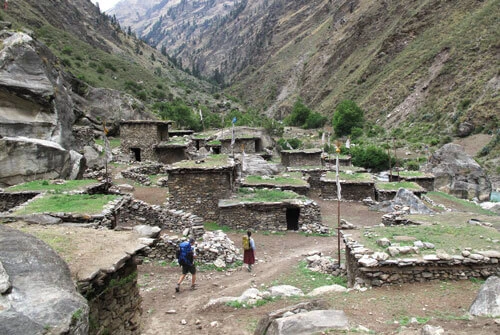Your First Big Himalayan Summit
This article ‘Best Trekking Peaks for Beginners in Nepal’ gives you the Top Three Trekking Peaks in Nepal that are best suited for beginners. If you are seeking to test your abilities and gain climbing experience then Nepal offers a range of trekking peaks ideal for new adventurers.
Ranging from 6,000 to 6,500 meters in height, these prominent peaks deliver the thrill of a high-altitude climbing experience without extreme risk or technical difficulty. Climbing these iconic trekking peaks offers challenges like climbing rugged mountain terrain, walking on glaciers, and pitching tents amid stunning vistas. They train from within and motivate you for bigger objectives in the years to come.
If you are new but serious about peak climbing in Nepal, this guide, ‘Best Trekking Peaks for Beginners in Nepal’ covers many crucial things to consider. The Top Three Trekking Peaks we are mentioning are Island Peak, Mera Peak, and Lobuche East which offer newcomers the most beautiful climbing experience. With a positive mindset and the right support team like us, these iconic trekking peaks can be conquered efficiently.
What Qualifies as a Trekking Peak in Nepal?
To qualify as a trekking peak in Nepal, summits must range between 5,000 meters (18,000 feet) and 6,500 meters (21,300 feet) in elevation. All these Trekking Peaks are nominated moderate altitude Climbing peaks as compared to expedition peaks like Ama-Dablam, Everest, or Annapurna. Trekking Peaks is open to all travelers and does not require extensive previous mountaineering experience.
They offer beginner climbers and moderately experienced high-altitude trekkers a chance to experience a Himalayan summit climb. These peaks can be climbed without the technical skills and specialized gear as it is essential for the higher peaks expeditions.
The Nepalese government opened up all these Trekking Peaks for commercial climbing in 2003 to promote tourism and regulate access. All expeditions must obtain permits, use licensed guides, and follow climbing regulations.
Top Three Trekking Peak Options for Beginner Climbers:
Here we give you the Top Three Trekking Peak options for beginners who are on their way to the first 6,000 meter Peak climbing experience:
Mera Peak (6,476m):
Of all Nepal's trekking peaks, Mera Peak is perhaps the most popular first-timers’ summit. It reaches an altitude high enough for spectacular views while remaining a non-technical climb achievable for fit beginners with basic mountaineering training. The standard route involves a trek through remote villages followed by a glacier walk and moderate incline up snow slopes.
Island Peak (Imja Tse, 6,189m):
The impressive pyramid shape of Island Peak (Imja Tse), towering 6,189 meters, is situated below the lofty Lhotse, the 4th highest mountain in the world. Island Peak is one of the most popular and recognizable trekking peaks in Nepal's Khumbu region. Island Peak earns its name from the way it appears to stand alone when viewed from the south near Dingboche village.
The ascent involves a technically straightforward yet physically demanding requiring the use of ropes, ice axes, and crampons. The Island Peak is also known as a beginner’s mountain. The Beginners will get a true taste of high-altitude peak climbing. The summit offers a breathtaking 360-degree panorama including Nuptse, Lhotse, and Ama Dablam among others.
Lobuche East Peak (6,119m):
Lobuche East is yet another beginner’s mountain. It offers novice climbers their first taste of Himalayan summit success. The base of Lobuche East Peak is just a few hour's hike from Everest Base Camp. In two days, people can summit Lobuche Peak and go back to its base camp.
The journey to the summit requires all climbing equipment to navigate the challenging vertical headwall as you make your way to the summit. The Lobuche East summit climb rewards mountaineers with unbelievable vistas across the Khumbu region.
Why Trekking Peaks are Ideal for Beginner Climbers?
Trekking peaks take beginner climbers into a truly high Himalayan environment giving them the feel of genuine wilderness. They offer first-timers with basic climbing skills and physical fitness required for future goals of higher mountains. Though they are achievable in a short period they craft a beautiful impact on people that would strengthen their physical and mental endurance.
These Trekking peaks provide introductory mountaineering knowledge like using ropes, ice axes, crampons, and other essential equipment which is mandatory while climbing higher mountains.
Benefits of Climbing Trekking Peaks in Nepal as a Beginner
Climbing Trekking Peaks in Nepal as a Beginner comes with many rewarding benefits:
- Gateway to Himalayan Mountaineering: Trekking peaks provide the perfect stepping stone for further high mountaineering expeditions. Climbers start acquiring critical techniques like using harnesses, ropes, and ice axes while getting familiar with mountaineering gear.
- Experience Iconic Nepal Teahouses and Trails: The trekking approach phases help beginners adjust to altitude gradually while enjoying traditional Nepal teahouses and legendary trails like the Everest Base Camp trek. Quality time is spent acclimatizing and preparing for summit bids.
- Straightforward Permits & Planning Booking: A Trekking Peak expedition with a Nepal-based adventure company like Nepal Pyramids reduces logistical hassles. We arrange all permits, climbing guides, porters, gear, and camping equipment to simplify your experience.
- Lower Costs than Higher Peaks: Compared to expensive 7,000 or 8,000-meter peak expeditions, trekking peak climbs in Nepal offer more achievable summit opportunities at a fraction of the price, making it realistic for more adventure seekers. Packages range from $1,500-$3,000.
- Stunning Summit Views: These 6000-meter peaks in Nepal deliver equally outstanding views from the summit similar to many high mountains. All of these three peaks, Island Peak, Mera Peak, and Lobuche East Peak are known for the exceptional views they offer from their summits. Their summits are the vantage points that can't be compared with any other.
- Safer Introduction to High-Altitude Climbing: Trekking peaks serve as the safest introductory climbing to high altitude. They are beginner-friendly letting new climbers test their limits with less risk than higher peaks that demand greater technical expertise.
Trekking Peak Gear Essentials - What You Need to Bring:
While trekking peaks are beginner-friendly they do reach high elevations and involve crossing glaciers and frozen landscapes. Furthermore, climbing hazards are associated with these friendly-looking peaks. Having the proper clothing and mountaineering gear is essential both for safety and comfort. Here is an overview of some essential gear for trekking peak climbs:
Clothing:
Multiple breathable moisture-wicking layers make it easy to adjust your level of insulation. This is because the temperatures in the mountains fluctuate widely between sun-exposed slopes, freezing summits, and cool nights. Lightweight long underwear combined with mid-weight insulation and windproof/water-resistant soft-shell jackets offers versatility. Bring thermal accessories too.
Mountaineering Boots:
The most critical piece of gear is the strong mountaineering boots. Your boots should be designed for snow climbing, and subzero conditions, and crampons fit with ankle support. They should be broken in long beforehand to prevent blisters.
Crampons:
Crampons strap onto boots to provide traction on hard snow and ice. Walking on glaciers and frozen slopes without them would be nearly impossible and extremely dangerous. Ensure they fit your boot size.
Climbing Harness:
A securely fastened harness lets you safely tie into rope systems erected by climbing guides for steep sections or crevasse crossings.
Ice Axe:
Ice axes serve as stabilization poles when trekking over glaciers but also help make solid holds for ascending steep sections during summit pushes. They are also highly used for rescue and climbing icefalls.
Rope & Carabiners:
Climbing ropes safeguard mountaineers on tricky pitches; carabiners let them securely connect to anchors and rope systems. On all trekking peaks in Nepal, our climbing guides generally handle setting up and operating rope systems.
SleepingBag:
Warm sleeping bags with temperature ratings of -21+ degrees guarantee cozy nights at freezing high camps along with insulating sleeping pads. Nepal Pyramids provides the warmest sleeping bag that can take up to -30 degrees temperature.
Backpack:
A 50+ liter mountaineering backpack hauls all your gear comfortably while ensuring proper weight distribution for long treks.
Bonus Gear: Gaiters, climbing helmet, balaclava, sunglasses and headlamp.
Physical Training for Trekking Peaks:
While trekking peaks are achievable for novice climbers, they still involve immense physical force. The percentage of oxygen is much lower at altitudes over 4500 meters. Proper acclimatization is very crucial for climbing Trekking peaks in Nepal due to the high risk of Altitude Sickness. Pre-physical training before you sign up for climbing peaks in Nepal is mandatory for your safety.
Here are the top training elements:
Aerobic Endurance:
Focus on building strong cardio conditioning so your heart, lungs, and muscles can perform in a low-oxygen environment. Walking long distances especially vertical hills or stairs carrying bag packs weighing the amount you intend to carry in the trip is good. Mix long weekend hikes with running, cycling, and swimming.
leg Strength:
Strengthen your thigh muscles, glutes, and calves so your legs can power each step on steep trails either carrying loads or wearing crampons on snow slopes. Mix heavy squats and lunges with hiking-specific exercises.
Flexibility:
Good flexibility prevents strains and muscle tightness. Since we walk long hours during the day and especially during peak climbing our muscles tend to harden due to dehydration and weather factors. Stretch regularly after workouts.
Mental Attitude:
Your positive mental attitude is the one that pushes you forward when you are exhausted and thinking of giving up during grueling summit bids. Cultivate a positive mental attitude through meditation and visualization while training.
Best Times for Trekking Peak Expeditions in Nepal:
The best climbing seasons for trekking peaks in Nepal are the Spring and Autumn seasons.
- Spring season in Nepal is from March till May when the days are warmer and the weather is stable and is considered a good climbing season. Besides, the Spring season is said to provide clear weather with stunning mountain views.
- Autumn season in Nepal is from mid-September till Early December. It’s a post-monsoon season but again advancing to winter it may be drier and colder. October is considered the best season for climbing whereas after November it will be winter climbing season.
- Winter: These days winter climbing is becoming more trending and many climbers climb trekking peaks even in the winter. However, it is generally not considered an ideal season. While technically possible on some peaks, winter brings added safety hazards and challenges.
Beginner climbers are highly recommended to plan their first Trekking peaks during the more stable and friendly seasons like spring or autumn rather than winter.
To Conclude:
If you are a beginner thinking of trying out peaks in Nepal read our ‘Best Trekking Peaks for Beginners in Nepal’ before you misguidedly pick some technical peak.
Conquering a trekking peak helps novice climbers acclimate to higher elevations while experiencing the thrill of trekking and mountain climbing. So if you aspire to climb bigger mountains someday, test yourself on Nepal's magnificent trekking peaks first to develop the strength and technique to take your climbing ambitions to new heights.




